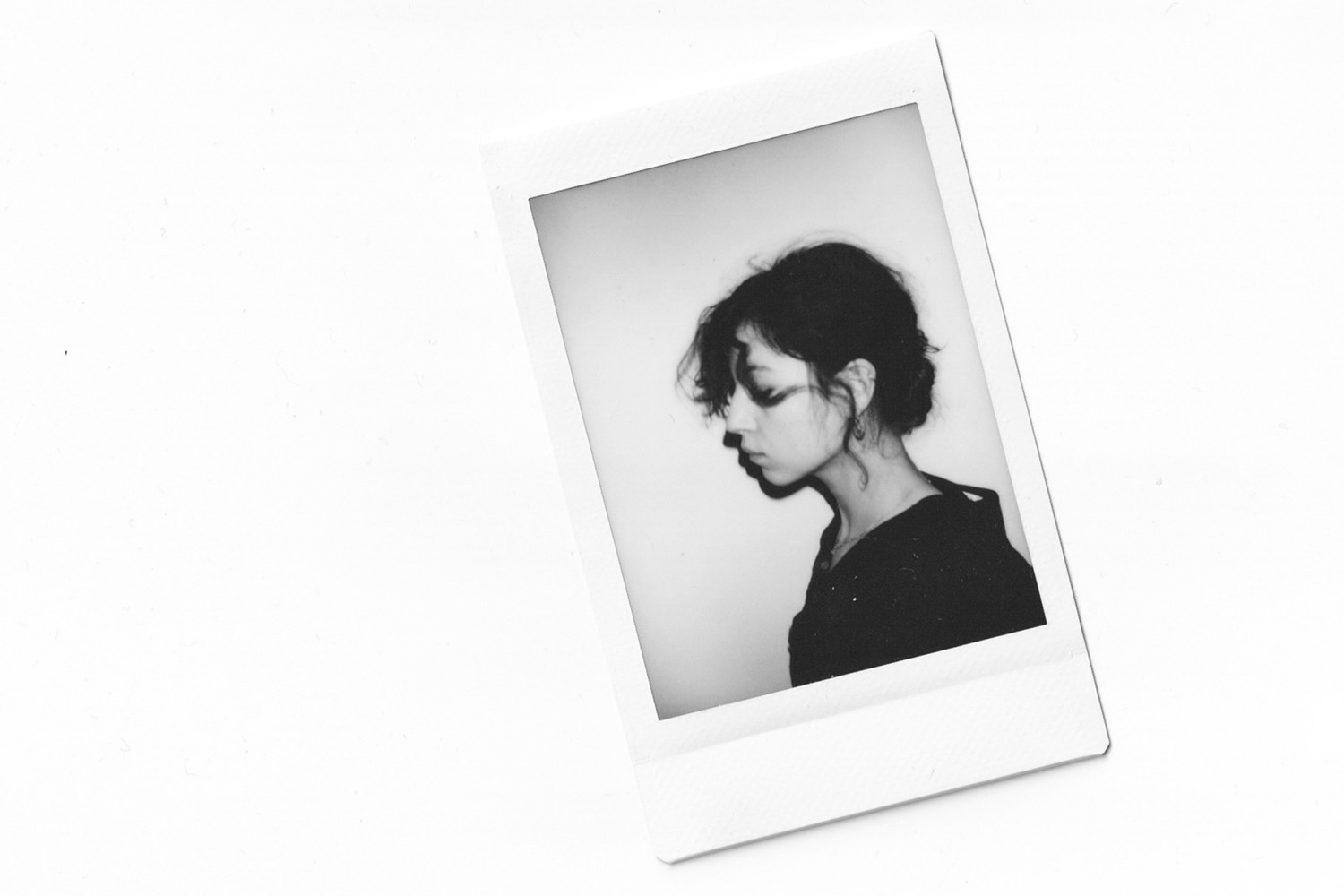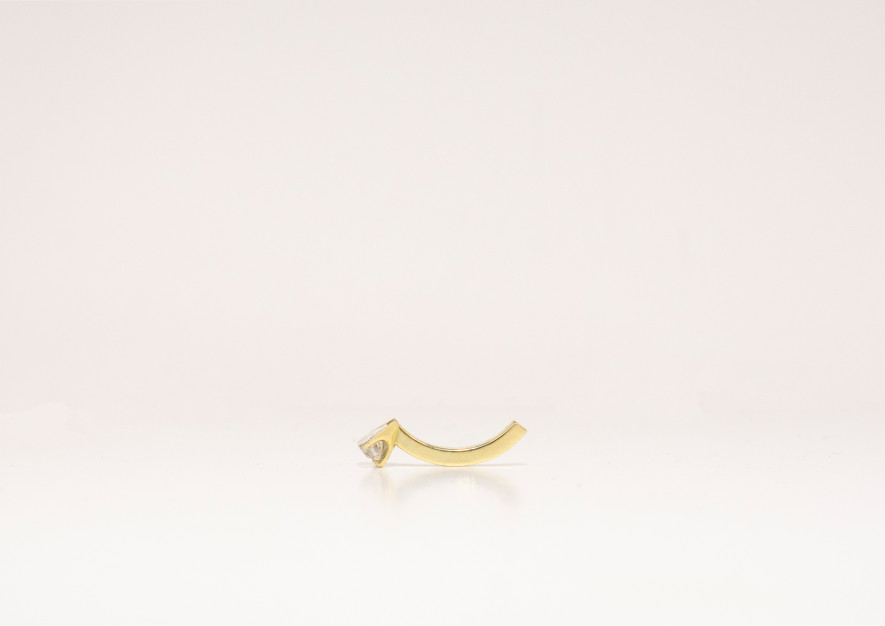Interview with Andreea Raluca Cojocaru
Andreea Raluca Cojocaru (b. 1994, Romania) is a jewellery designer who has gained
recognition for her work that explores the importance of craftsmanship and fair
compensation for labour. During her studies, Andreea developed a body of work that
focuses on the conditions in which products are manufactured. Her work "Made in Belgium
by a Romanian" highlights the role of the maker while questioning traditional notions of
value. She studied Fine Art Graphics at the faculty of Arts and Design in Timisoara,
Romania from 2015 till 2018 and then went to the Royal Academy of Fine Arts, Antwerp,
Belgium to study Jewellery Design and Gold- and Silversmithing.
This interview is the result of an email conversation between Andreea Raluca Cojocaru
and Tom Iriks which that took place between April and May 2023.
Could you explain your personal journey in art and which experiences shaped your
artistic path? And what made you decide to become a jewellery artist?
I went to art school from a very young age, starting from elementary school and continuing
through high school. I did my first BA in Romania, where I studied fine art graphics and
printmaking. I was already working with metal at that time, but more using it as a tool to
produce images with techniques like etching. I remember missing a layer of interaction in
my work. I decided to explore artists’ books as a medium where I found the tactile
connection between the object and the person experiencing it intriguing. At the same
time, I would make things that for some reason ended up as wearable objects. Later on, I
applied to the jewellery design program at the Royal Academy of Fine Arts in Antwerp.
Although I am no longer active in the graphic field, it continues to influence my jewellery
practice.
How would you describe your work?
I see my work as conceptual and I am reinterpreting the image of traditional jewellery by
questioning its role and its connection to the body. I am not always interested in its
wearability, or at least not directly. Instead, I’m focusing on the process of making and
highlighting the role of the maker. Another important aspect for me are the materials and
their source. I like working with metal and traditional techniques, but I also started
considering alternative ways of sourcing metals. During the residency, I plan to repurpose
second-hand silver jewellery, seeking objects that already carry meaning. I like the idea of
playing with the intrinsic value of a jewel to create a new visual narrative. The value of
labour also plays an important role in my work. This alternative way of sourcing the metal
has led me to question how to account for the labour that went into making a piece
instead of solely recycling it for the preciousness of its material. Currently I am working on
ways of preserving that labour.
Can you talk about your series “Made in Belgium by a Romanian”?
Yes, the series was developed as my bachelor project at the Royal Academy of Fine Arts in
Antwerp. My starting point in jewellery was very formal, which was influenced by my
apprenticeship in Romania before applying to the Academy. This experience later on
prompted questions about the role of jewellery in everyday life, its value, and, most
importantly, the role of the maker. I was introduced for the first time to the traditional
techniques of working with metal. This made me understand the laborious process of
jewellery making. I aimed to visualise this process and the labour involved in making
jewellery, as well as to explore how the same amount of work is valued differently based
on the geographic location. As a starting point, I compared the minimum wage in Romania
to that in Belgium and developed a way of showing that difference through the language of
jewellery.
What is in your opinion the difference between a designer, craftsmen, maker or artist?
I recently had an interesting conversation with a friend about this. For me, it is difficult to
pinpoint and describe myself as one or the other because of my background in fine art, and
because jewellery is not considered to be a part of it, at least in the collective mind,
which is evident in the name, “jewellery designer". In my opinion, the art jewellery scene
is very niche. However, what attracted me to pursue jewellery was the craftsmanship
involved and the connection with the body. I use jewellery as a medium, employing the
language of traditional jewellery to visualise a concept. I believe there is a fine line
between art and craft, and my work is somewhere in the middle.
What are you planning to research and improve during the residency?
Before my studies at the Royal Academy in Antwerp, I finished a BA in Fine Art Graphics
and it influenced my approach to jewellery. I am particularly interested in the marks that
we, as makers, leave behind on the surface, in this case, metal. These marks represent the
language of the maker, tracing lines for cutting, marking the metal before drilling, the
negative space that’s left after cutting a plate, the marking guide when setting a flush
stone, and sometimes plier marks from bending metal, or solder lines. Traditionally, these
marks are meant to be concealed or polished away. These marks show the process and all
the effort that went into making a piece. I want to make this visible and integrate it into
my designs. Another aspect of the project would be to visually document the process. After
I graduated, I thought of gathering the research material into a book, which is still
something I am looking into.
What kind of added value or narrative do you hope to reveal by integrating these
maker marks into the final piece?
I aim to shift the perspective and focus more on the process and not on the outcome. The
final result is guided by the process of making. It is an experiment for me as well.
Sometimes I have a fixed idea of what I’m hoping to achieve, but often I discover
something else along the way.
Do you write or draw when are developing new work?
It depends on the context. When it comes to designing a new piece, I view it more as a
collage, where different components with distinct meanings come together to form a new
piece or a new shape. Although I have a background in fine art, I do not draw as much as
before. I find other ways to visualise my work. As for writing, I take notes during the
development stage, as I’m always afraid to forget an idea. Sometimes I revisit old notes
and am surprised to see how far I’ve taken an idea and what new layers of meaning it
gained. At times, these notes are just scribbles waiting to become something more.
What inspires you to create? Where do you get your ideas from?
Daily observations, as I mentioned before, I take a lot of notes to record potential ideas
that may evolve into new work. I also draw inspiration from materials and their histories,
as well as objects with multiple layers of meaning. So, going back to the daily observations
could be anything, from walking down the street, visiting exhibitions, a conversation,
reading, or exploring objects at flea markets.
What are your long-term goals as an artist? What is your dream relating to your art
career?
Based on my experience, my interests tend to shift a lot, but something that remains
constant is the “making”. Currently, I am interested in exploring the integration of textiles
and traditional techniques such as weaving, knitting, embroidery, and natural dying
methods into my practice. It has a lot to do with my upbringing and my curiosity for
craftsmanship across many fields, and especially the boundary between art and craft
fascinates me.





.jpg)